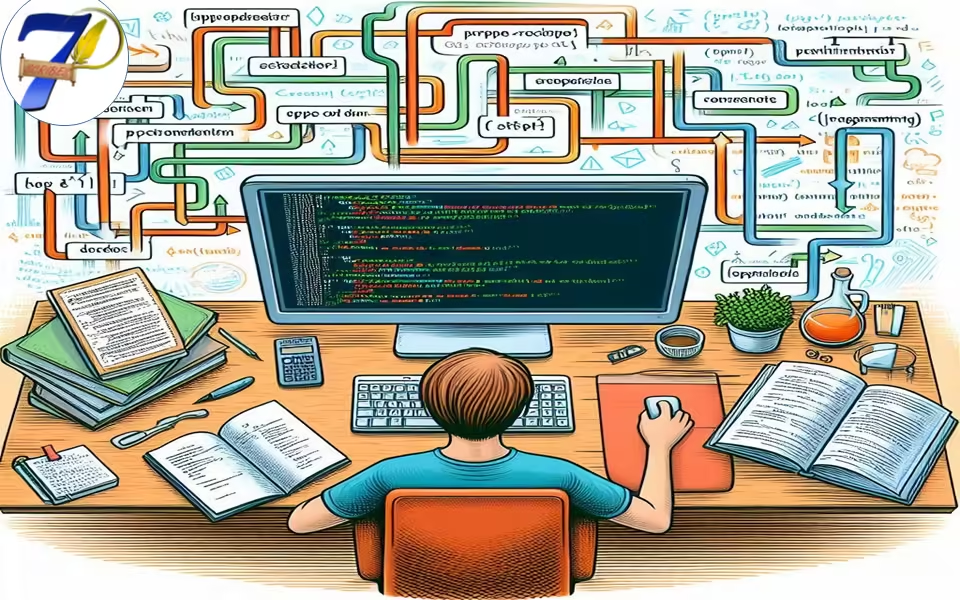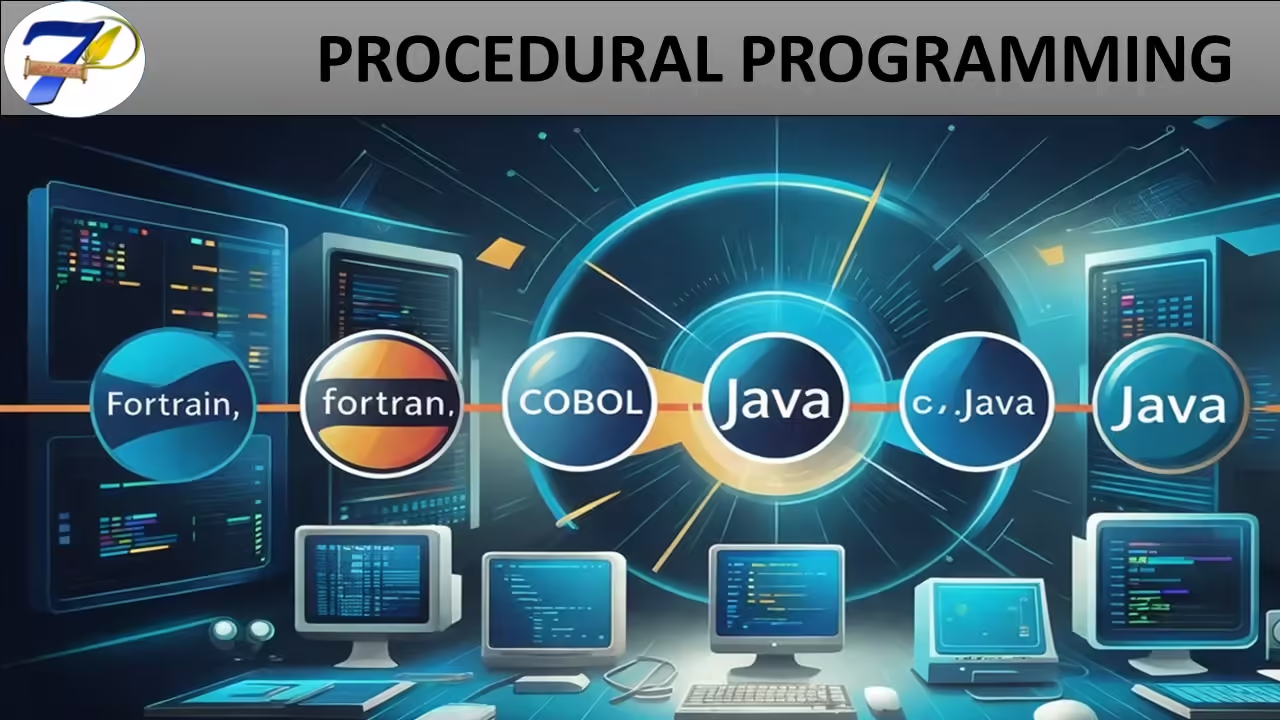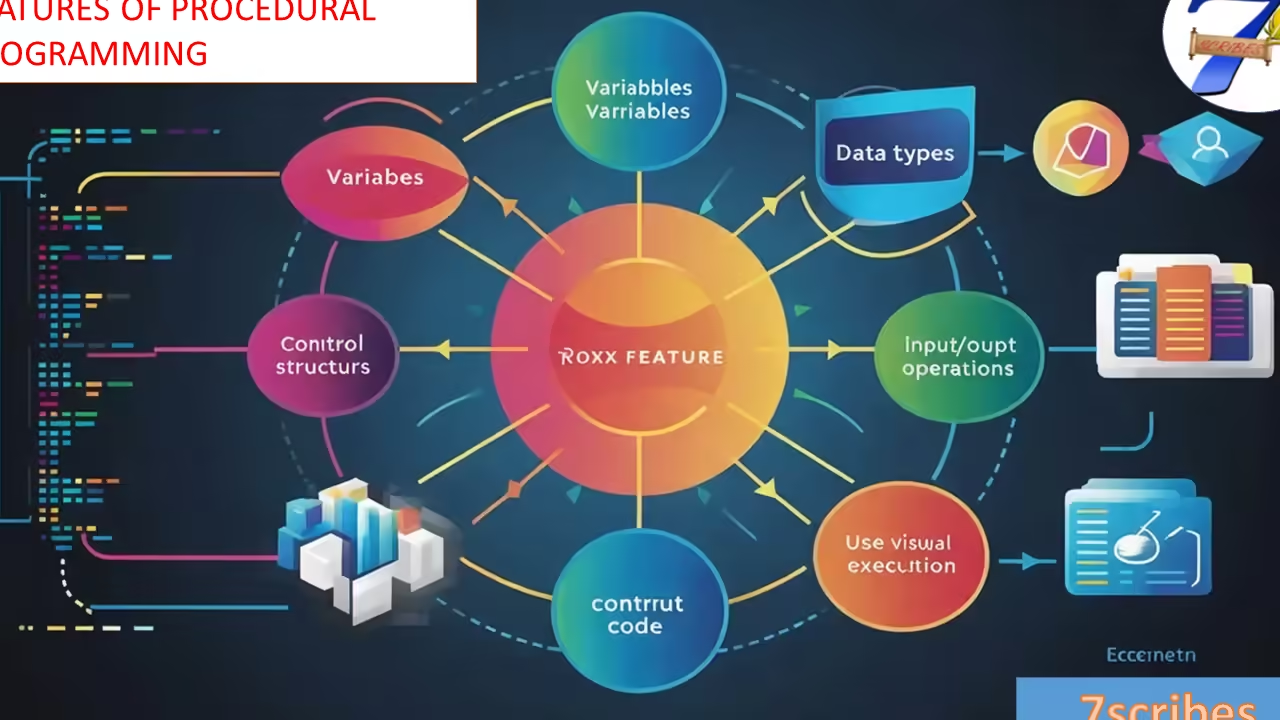Procedural programming follows a straight forward approach, in which programs execute from its starting points and then travel around the body until it embarks to the last piece of code. This method is linked with our daily routines which begin in the early morning and conclude at night.
Throughout this time , we engage in number of tasks such schooling, playing games, self-study, going to the gym and so on .In this article we will dive into the procedural programming and explore different concepts that the procedural programming host and its miracles in the technological universe.
Introduction
Before introducing the procedural programming, we will just recall our today breakfast. Before serving the breakfast on the table, it has to pass through multiple procedures fallowed by a specific recipe. The recipe is the set of organized instructions that define which type of meal will serve on the table.
The step by step instructions mentioned in the piece of paper or any other form should be fallow to have an expected breakfast. Missing of one step may be the cause of another result. Just like that, procedural programming is an organized form of code in which step by step execution sequential approach is involved.
History
Assembly language and machine level language gave birth to the procedural language during the course of 1940s to 1950s.Some influential procedural languages or Short Code, COBOL, Fortran .The development of C language enhanced the portability and efficiency of procedural programming along with its extension (C++ language) influenced other languages like Java and Procedural programming languages has big hand un the evolution of computer science and other renowned programming languages.
Features
Except the main characteristics of procedural language including procedure-oriented, top down approach and sequential execution of statements there are another key features that make it more efficient, modular and portable
Following are some important features of procedural programming
Variable
In procedural programming variable has pivotal role in the organization of code, without variable the code is soulless. Variable is the symbolic representation of computer memory that is used to store data. We can understand the concept of variable with the help of daily life example.
In our daily life we used to perform different calculations related to our work life, professional life as well as our normal life. Suppose someone ask us to perform addition on two numbers, means that we have to add to numbers. Firstly, our brain ask for two numbers and store them on a specific location and then perform the operation.Just.like that in computer calculations through programming, variables are used to store different data in computer memory.
Example:
int num1=2;
int num2=3;
In this example num1 and num2 are two variables that store 2 and 3 respectively.
Data type
Data type is another important feature of procedural programming language .There are two main functions of data type in programming. Firstly, it will define which type of data can be store in the variable .In previous example of variable (int) indicates that the variable can store integer data.
Just like that to there are another data type that can store different data like float, char and bool .Secondly, data types also define what will be the range of data that can store in a variable such that int data type can store the data under the range of -32768 to 32767.Similarly ,another datatype has different range.
Control structure
In our daily lives many tasks that we perform multiple times and number of task we skip from our schedule accordingly .Procedural programming also give this opportunity to user by using the concept of control structure. Control structure govern the flow of programming. It is used to priorities different task according to the situation.
Control structure containing loop, selection statement and jump and so on. The purpose of loop is to repeat a bunch of code repeatedly similarly, selection statement aim to execute bunch of code based on different conditions while, jump is used to skip sort of program in different situation. Jump include break and continue keyword.
Input/output Operations
The incredible feature of procedural programming is input/output operations.
It allows user to communicate with computer .It involve giving data to the computer and getting data from computer. It facilitate user to interact with system. Input/output operations define how computer interact with outside world and how response the world. Input operations involve getting data from user through input devices like mouse and keyboard etc. On the other hand, getting information from computer after calculations is known as output operations.
Application of Procedural programming
Procedural programming is a programming paradigm centered around the use of procedure calls and is extensively utilized across different fields, especially in the development of system applications, scripting, and gaming. This approach promotes a clear, step-by-step methodology, enabling developers to decompose complex problems into smaller, more manageable functions or procedures. This facilitates easier maintenance, debugging, and enhancement of the code, as each function can be tested and modified independently.
In the context of game development, for example, procedural programming is instrumental in defining character behaviors, managing game states, and processing user inputs, resulting in efficient and well-structured code that improves the gaming experience. Furthermore, programming languages such as C, Pascal, and Python illustrate the principles of procedural programming, making it approachable for beginners and effective for crafting algorithms that depend on sequential processing.
Best Practice of procedural programming
A key best practice in procedural programming is to uphold modularity by structuring code into clearly defined functions or procedures, each designed to perform a specific task. This approach not only improves readability but also encourages the reuse of code and simplifies the debugging process, as each function can be tested independently.
Moreover, adopting meaningful and consistent naming conventions for both functions and variables aids in communicating their intended purpose, making the code more comprehensible for other developers and easier to maintain in the future. It is also crucial to handle data flow using parameters and return values instead of depending on global variables, which can introduce unintended consequences. Lastly, comprehensive documentation and comments should accompany the code to clarify its logic and flow, ensuring that it remains accessible to other developers and that the codebase stays understandable over time.
Conclusion
To sum up, procedural programming is a crucial method in software development that focuses on organizing code in a structured and logical way through the use of functions or procedures. Its core principles of modularity, clarity, and code reuse help developers produce efficient and easily maintainable code.
By encouraging a disciplined approach that includes meaningful names for functions and variables, effective data management, and thorough documentation, procedural programming streamlines the development process and promotes better teamwork among developers. Even as technology advances, the essential ideas of procedural programming remain significant, serving as a reliable foundation for moving into more advanced programming paradigms while ensuring that fundamental programming skills are well-developed.
FAQs
- What is procedural programming?
Procedural programming is a way of writing code that focuses on breaking down problems into smaller, step-by-step procedures or functions. It’s like following a recipe to cook a meal – each step is clearly defined and executed in order.
- What are the key features of procedural programming?
- Variables: Represent data storage locations in memory.
- Data Types: Define the kind of data a variable can hold (e.g., numbers, text).
- Control Structures: Control the flow of execution (e.g., loops for repetition, conditional statements for branching).
- Input/Output (I/O): Allows interaction with the user (getting data in and displaying results).
- What are the benefits of using procedural programming?
- Clear and organized code: Easy to understand and maintain.
- Modularity: Break down complex problems into smaller functions for reusability and independent testing.
- Efficiency: Well-structured code can be more efficient in terms of execution speed.
- What are some applications of procedural programming?
Procedural programming is used in various areas, including:
- System applications: Writing operating system utilities and tools.
- Scripting: Automating tasks and creating configuration files.
- Game development: Defining character behaviors, game states, and user input handling.
- Early programming languages: Many foundational languages like C, Pascal, and FORTRAN use procedural principles.
- Is procedural programming still relevant?
While newer paradigms like object-oriented programming exist, procedural programming remains valuable for:
- Learning foundation: It provides a solid foundation for understanding programming concepts.
- Simple tasks: Procedural programming is often well-suited for smaller, less complex programs.
- Efficiency: It can be efficient for algorithms reliant on sequential processing.
Read more…
History of Programing Languages.



Great overview